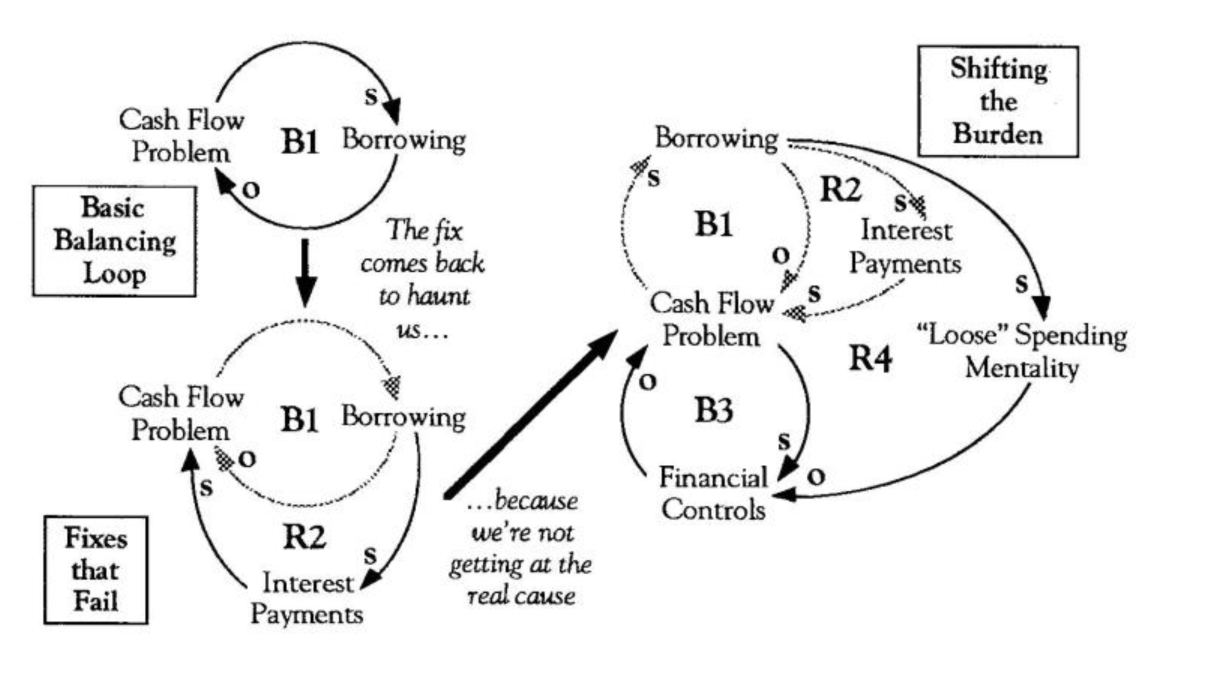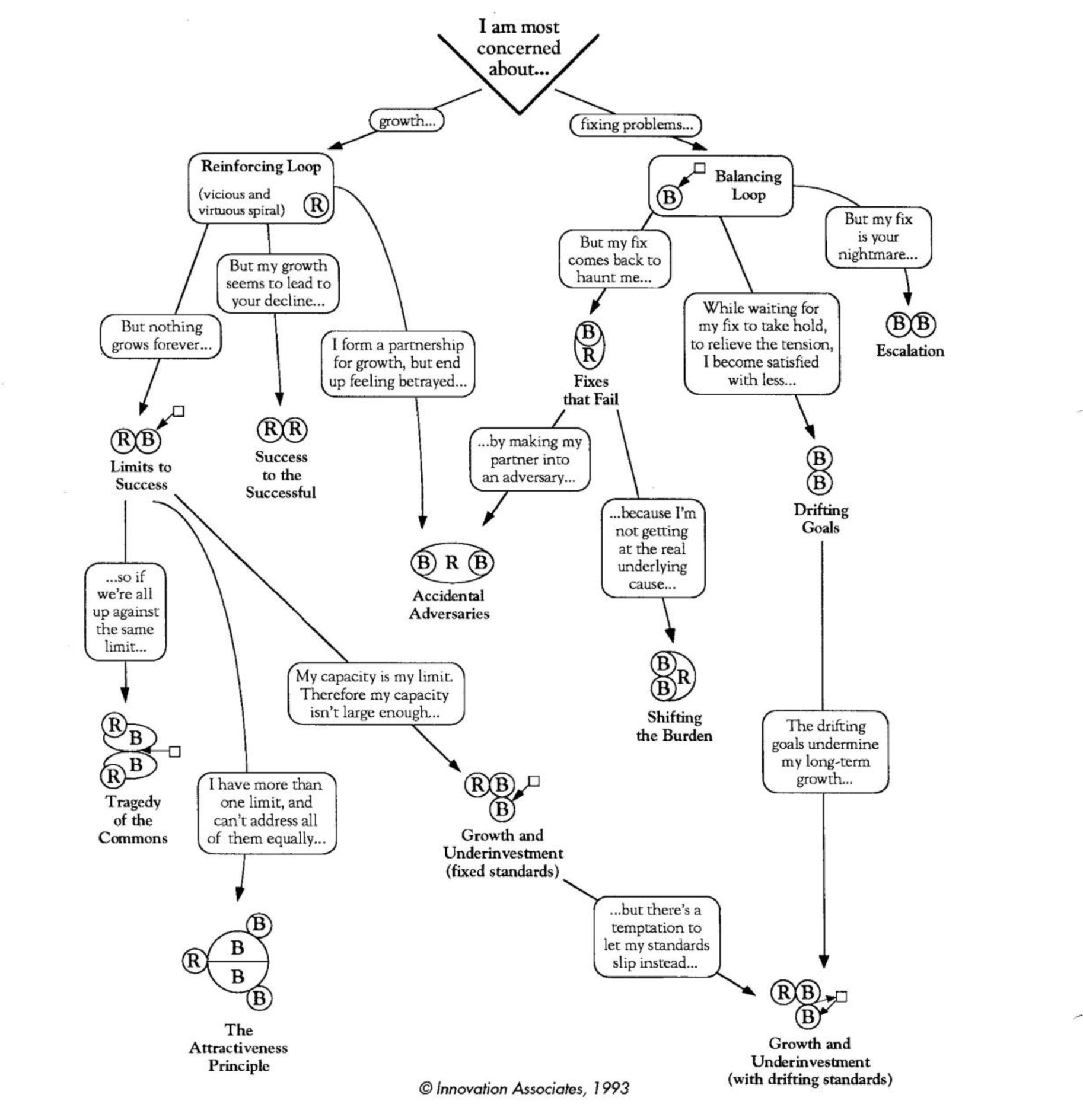Consider the plight of a small “mom and pop” lawn care company. The owners faced periodic cash shortages due to the cyclical nature of their business and were forced to borrow from credit lines. During their first three years, they managed to climb partially out of debt several times, only to slip deeper into the hole with the next cash crunch. By the time they turned to a systemic analysis, they had begun to wonder whether any leverage points existed for their situation. But before they could look for leverage, they had to diagnose their problem — fast.
Using the Archetype Family Tree
The Systems Archetype Family Tree is based on two principles: that the systems archetypes are related strategically to each other, and that many situations can be described by progressing through several archetypes as they are linked on the tree (see “The Archetype Family Tree”). The tool is intended to help you use the relationships between archetypes to figure out how to begin looking at a new situation, and to gain increasing understanding of a problem as you work through the tree.
For example, suppose you were one of the proprietors of that lawn care company. You would start at the top of the chart, thinking about the nature of your situation. Is the phenomenon you want to understand something that used to be growing, whose growth you would like to reinstate, or something that is growing too quickly and you are worried about where it might lead? Then wind your way through the statements on the reinforcing (left-hand) trunk of the tree to see if they apply to your situation.
In this particular case, growth was not an issue; they had a debt problem to consider. If you, like the lawn care company owners, are trying to fix a chronic problem that persists despite your efforts to fix it, you want to work through the balancing (right-hand) trunk. Again, follow the chain of logical relationships, continuing to identify elements of your story.
For example, the lawn care proprietors’ fix” was to borrow whenever their cash flow was low (BI in “A Diagnostic Journey through the Archetype Family Tree”). As they serviced their mounting debt, however, the fix came back to haunt them in a “Fixes that Fail” structure (R2).
A Diganostic Journey Through The Archetype Family Tree

Working through the family tree reveals that what began as a simple balancing process(borrowing to meet cash needs) becoming a “Shifting the Burden” structure, in which the real leverage is to tighten financial control.
The lawn care proprietors sensed they were trapped in a “Shifting the Burden” process because they were not addressing the more fundamental issue of weak financial controls (B3). The borrowing fix was making matters worse by reinforcing a “loose” spending mentality (R4). Having diagnosed the situation, they could take effective action by focusing more attention on the root causes of their problems — low income and high spending — by tightening their budget and investing in better financial management tools.
Experimenting
Experimentation is key to using the archetypes most effectively. It is probably most useful to look at a particular situation or problem through the lens of several different archetypes, moving through the “tree” as needed. You may find yourself combining archetypes, adding loops and links to adapt them more completely to your story. By the time you have gleaned what you can from them, the loops may be five or six generations removed from the original archetype with which you began.
Michael Goodman is vice president of Innovation Associates (Framingham, MA). Art Kleiner has a long-standing background writing about business, environment, and systemic issues. This material will appear, in a different form, in the Fifth Discipline Fieldbook (Doubleday, forthcoming Spring 1994) .
The Archetype Family Tree

